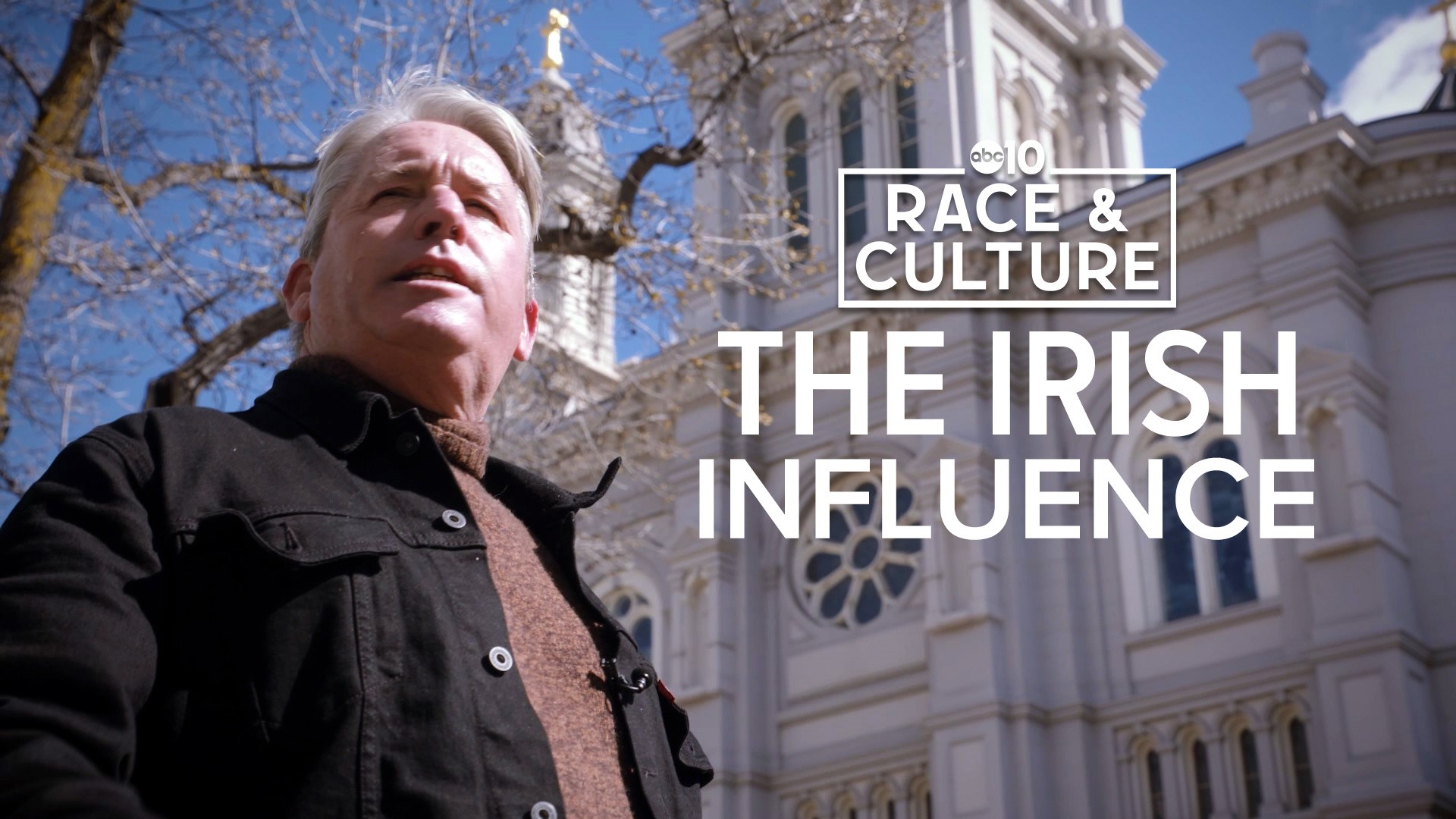SACRAMENTO, Calif. — St. Patrick’s Day is by far the biggest day of the year for Sacramento to celebrate the Irish community. If you look past the green beer, the four-leaf clover shirts, and the corned beef, you’ll see evidence of the Irish influence all over the city.
“When you hear all the trains going by, that is perfect background music for the Irish. They were all about building the railroads and building these arteries that went through Sacramento and really connected Sacramento to the rest of the country,” said writer and historian Joe McNamara.
McNamara could show you dozens of examples of Irish-built landmarks in the city, but nothing compares to the Cathedral of the Blessed Sacrament, a Catholic church built by Sacramento’s most influential Irishman.
“This is the cathedral that Patrick Manogue built with all that money he made in the gold fields,” said McNamara.
An immigrant from Kilkenny, Ireland, Patrick Manogue struck it rich during the gold rush and used his wealth to go to France and get ordained. He then came back to California to help his fellow Irishmen through his work with the Catholic Church.
“At his funeral everyone came. Jew, Gentile, Protestant, and they were all unanimous that this was a great man for Sacramento,” said McNamara.
You'll find Patrick Manogue buried at the St. Joseph Cemetery on 21st Street. It’s also the final resting place of Joe McNamara’s family.
“My family has been in Sacramento since the late 1870s,” said McNamara.
The cemetery is also the final resting place for many Irish who re-settled in California.
“The Irish would come out here, make a little money, then bring over a brother or a sister. So, soon you would have families complete again,” said McNamara.
When “Great Famine” hit Ireland in 1845, many Irish immigrated to the U.S. to find work. When they arrived, many were discriminated against. Joe framed an old, classified ad from a Sacramento newspaper spelling out the blatant bigotry of the time.
“It says, 'Wanted a first class cook, German preferred. Irish need not apply,'” said McNamara.
Railroads like Southern Pacific were some of the only businesses hiring the Irish. After the completion of the Transcontinental Railroad, many Irish migrants chose to keep their railroad jobs and make a life in Sacramento.
“The Irish are alive and well and they take some of the best from the past, and leave the worst of the past, and that is the brand of Irish you see today,” said McNamara.
► Get more stories about race and culture: Sign up for our newsletter at www.abc10.com/email and find more online in our Race & Culture section.
One place where Irish traditions continue is at the McKeever School of Irish Dance on 24th Street. Nicole McKeever is a former member of the popular theatrical show Riverdance. After years of performing, Nicole settled down in Sacramento to keep the tradition of Irish dance alive.
“I teach third graders every year for 10 weeks and everyone loves learning Irish dance,” said McKeever.
Traditionally, Irish dance was taught by traveling dance masters who would go from home to home to teach new dances, often on the family's dirt floor. Nicole says those dirt floors influence the close dance steps in a very odd way.
“You cant make sound on a dirt floor so they take down the door and put it on the dirt floor and dance on it. Well, the door is small and you only have so much room to dance,” said McKeever.
In a way, Nicole sees herself as a dance master. She and her colleagues traveled the world inspiring Irish dance.
“I like being in Sacramento. I am kind of stuck here, but my colleagues have studios in Mexico or Texas or Arizona and they are traveling around,” said McKeever.
St. Patrick’s Day will always be one of the most visible ways to highlight the Irish community, but in Sacramento, green beer and four-leaf clovers are not the best way to support the local heritage.
“Be responsible and maybe if you hear a song, ask a question [about] a song you heard. Maybe it’s a song about how Dublin has changed from the old ways to the new. Just ask,” said McNamara.
MORE ABOUT IRISH DANCER NICOLE MCKEEVER























